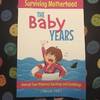Hurricane/ Tropical Storm Safety & Preparation, and What Watches, Warnings, Outlooks, & Advisories Mean

It is still hurricane season here in the US. Hurricane season runs from June 1 to September 30, but hurricanes can happen beyond those dates. Here is a roundup of information about hurricanes and how to stay safe, thanks to the National Weather Service, Red Cross, and NOAA.
Hurricane Safety
Hurricanes are among nature's most powerful and destructive phenomena. On average, 12 tropical storms, 6 of which become hurricanes form over the Atlantic Ocean, Caribbean Sea, or Gulf of Mexico during the hurricane season which runs from June 1 to November 30 each year. Over a typical 2-year period, the U.S. coastline is struck by an average of 3 hurricanes, 1 of which is classified as a major hurricane (winds of 111 mph or greater). By knowing what actions to take before, during, and after a hurricane, you can increase your chance of survival.This website provides information on how to learn about your specific hurricane vulnerabilities. By knowing what actions to take before the hurricane season begins, when a hurricane approaches, what action to take when the storm is in your area, and what to do after a hurricane leaves your area you can increase your chance of survival.
Hurricane Hazards
While hurricanes pose the greatest threat to life and property, tropical storms and depression also can be devastating. The primary hazards from tropical cyclones are storm surge flooding, inland flooding from heavy rains, destructive winds, tornadoes, and high surf and rip currents.
Storm surge is the abnormal rise of water generated by a storm's winds. This hazard is historically the leading cause of hurricane related deaths in the United States. Storm surge and large battering waves can result in large loss of life and cause massive destruction along the coast.
Storm surge can travel several miles inland, especially along bays, rivers, and estuaries.
Flooding from heavy rains is the second leading cause of fatalities during landfalling tropical cyclones. Widespread torrential rains from tropical storms and hurricanes often cause flooding hundreds of miles inland. This flooding can persist for several days after a storm.
Winds from a hurricane can destroy buildings and mobile homes. Debris, such as signs, roofing material, and items left outside can become flying missiles during hurricanes.
Dangerous waves produced by a hurricane's strong winds can pose a significant hazard to coastal residents and mariners. These waves can cause deadly rip currents, significant beach erosion, and damage to structures along the coastline, even when the storm is more than a 1,000 miles offshore.
Hurricane and Tropical Storm Watches, Warnings, Advisories and Outlooks
Whenever a tropical depression, tropical storm, or hurricane has formed, the NOAA National Hurricane Center (NHC) issues tropical cyclone advisory products every 6 hours at 5 am, 11 am, 5 pm, and 11 pm EDT. When coastal tropical storm or hurricane watches or warnings are in effect, the NHC issues Tropical Cyclone Public advisories every 3 hours. You can find these products on www.hurricanes.gov and on TV, radio, cell phones and other computers and NOAA Weather Radio. Information on major NHC products is detailed below. For more details on all NHC products, see the National Hurricane Center Product User's Guide.
Warnings
Watches
Advisories
Outlooks
NWS Local Forecast Office Tropical Products
What to Do Before the Tropical Storm or Hurricane
The best time to prepare for a hurricane is before hurricane season begins on June 1. It is vital to understand your home's vulnerability to storm surge, flooding, and wind. Here is your checklist of things do do BEFORE hurricane seasons begins.
Know your zone: Do you live near the Gulf or Atlantic Coasts? Find out if you live in a hurricane evacuation area by contacting your local government/emergency management office or by checking the evacuation site website.
Write or review your Family Emergency Plan: Before an emergency happens, sit down with your family or close friends and decide how you will get in contact with each other, where you will go and what you will do in an emergency. Keep a copy of this plan in your emergency supplies kit or another safe place where you can access it in the event of a disaster. Start at the Ready.Gov emergency plan webpage.
Put Together an Emergency Supplies Kit: Put together a basic disaster supplies kit and consider storage locations for different situations. Check emergency equipment, such as flashlights, generators and storm shutters.
Review Your Home Owners Insurance: Review your insurance policy to ensure that you have adequate coverage for your home.
Understand NWS forecast products, especially the meaning of NWS watches and warnings.
Download the NWS Hurricanes, Unleashing Nature's Fury booklet for more information about hurricanes.
Actions to Take When a Tropical Storm or Hurricane Threatens
When a hurricane threatens your community, be prepared to evacuate if you live in a storm surge risk area. Allow enough time to pack and inform friends and family if you need to leave your home.
Secure your home: Cover all of your home's windows. Permanent storm shutters offer the best protection for windows. A second option is to board up windows with 5/8 inch exterior grade or marine plywood, built to fit and ready to install. Buy supplies before the hurricane season rather than waiting for the prestorm rush.
Stayed tuned in: Check the websites of your local National Weather Service office and local government/emergency management office. Find out what type of emergencies could occur and how you should respond. Listen to NOAA Weather Radio or other radio or TV stations for the latest storm news.
Follow instructions issued by local officials. Leave immediately if ordered!
If NOT ordered to evacuate:
Take refuge in a small interior room, closet or hallway on the lowest level during the storm. Put as many walls between you and the outside as you can.
Stay away from windows, skylights and glass doors.
If the eye of the storm passes over your area, there will be a short period of calm, but at the other side of the eye, the wind speed rapidly increases to hurricane force winds coming from the opposite direction.
ACTIONS TO TAKE AFTER A HURRICANE
Continue listening to a NOAA Weather Radio or the local news for the latest updates.
If you evacuated, return home only when officials say it is safe.
Once home, drive only if necessary and avoid flooded roads and washed-out bridges. If you must go out, watch for fallen objects in the road, downed electrical wires, and weakened walls, bridges, roads and sidewalks that might collapse.
Walk carefully around the outside of your home to check for loose power lines, gas leaks and structural damage.
Stay out of any building if you smell gas, if floodwaters remain around the building or if the building or home was damaged by fire and the authorities have not declared it safe.
Carbon monoxide poisoning is one of the leading causes of death after storms in areas dealing with power outages. Never use a portable generator inside your home or garage. Review generator safety.
Use battery-powered flashlights. Do NOT use candles. Turn on your flashlight before entering a vacated building. The battery could produce a spark that could ignite leaking gas, if present.
Do you live near the coast?



















Comments
Sarah
http://www.seasonsbysarah.com